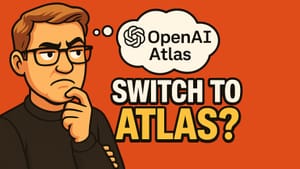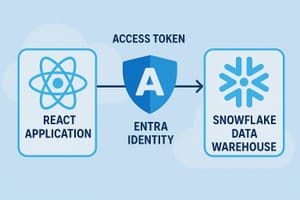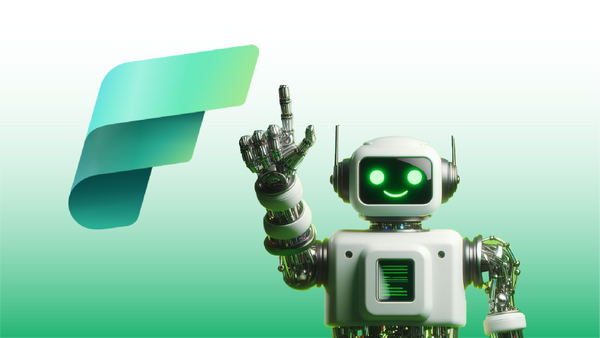Generative AI has moved beyond experimentation and is now creating measurable business outcomes in many organizations across a range of industries. Achieving success with AI at enterprise scale requires more than training a model and deploying a chatbot. Long-term, repeatable success requires a well-structured, multidisciplinary team that can design, integrate, deploy, and continually improve AI systems.
In this post, we’ll explore how to design an enterprise-grade Generative AI team, why effective AI delivery requires a full-stack approach, and how to strike the right balance between innovation, governance, and ROI.
Creating Enterprise Value with Generative AI
It's important to view Generative AI not as a single technology, but as a capability layer that enhances and extends organizational assets, IT infrastructure and enhances existing solution development strategies.
When done well, incorporating GenAI into solution development enhances decision-making, productivity and customer experience.
Examples include:
- Document intelligence and automated summarization to accelerate information worker productivity.
- Risk analysis and planning tools that combine LLM reasoning with enterprise data to uncover new insights and increase analytical capacity.
- Digital assistants that increase individual productivity and help shift employee time from low-value, repetitive activities to high-value, analytical activities.
In each case, the goal isn’t simply deploying AI — it’s embedding AI capabilities within business workflows in a way that's secure, scalable, and provides measurable value.
Project Type Drives Team Design
Generative AI projects that support business process improvement generally fall into three categories — each requiring a slightly different skill matrix to deliver effectively:
- Assistants (e.g. copilots, chatbots): These products focus on teaming an AI assistant with a single end-user to increase their individual productivity and augment their skills.
- Workflows (e.g. document pipelines, planning systems): Emphasize integrations, orchestration, and reliability. These products focus on automating defined business processes and increasing business unit capacity.
- Agentic Systems (e.g. autonomous decision agents): Prioritize reasoning, tool integration, and independent task completion. These systems provide a set of capabilities to an agent, and provide the agent some degree of freedom in deciding how to use tools to achieve a goal given some input or event.
When structuring a team's skill sets, knowing the expected project types are key to identifying which roles are core and which are supportive. Assistants tend to need fewer role types, while agentic solutions tend to require more multi-disciplinary team compositions. Workflows include automations and system integration that fall somewhere between the other two project types.
Understanding the Team Skill Matrix
Every organization is different, but a practical role breakdown might look like this:
Function | Core Responsibilities | Example Roles |
|---|---|---|
AI Engineering | Model and prompt tuning, agent design, evaluation | AI Engineer, Prompt Engineer |
Data & Integration | Data pipelines, RAG frameworks, API integration | Data Engineer, Solution Architect |
User Experience | Interfaces and user journeys | Front-End Developer, UX Designer |
Safety & Governance | Evaluation, compliance, Responsible AI | AI Policy Lead, QA Specialist |
DevSecOps | CI/CD, observability, performance | Cloud Engineer, MLOps Engineer |
Program Management | Portfolio planning, stakeholder management | Program Manager, Product Owner |
Project Types vs the Skill Matrix
Not every AI project needs every function at full strength. The mix of skills needed is based on the nature of the solution.
- Assistant-style projects. Enterprise copilots or chatbots tend to emphasize UX design, prompt engineering, and content safety.
- Workflow-oriented systems, by contrast, depend more heavily on integration and DevSecOps expertise, since they must orchestrate multiple data sources and services reliably. These projects often involve close coordination between AI engineers and data platform teams to design durable, auditable pipelines.
- Agentic systems—autonomous or semi-autonomous agents that reason, plan, and act—demand the broadest cross-section of skills. They combine deep model and agent design with rigorous safety evaluation, monitoring, and governance, as well as program management to align business policy and risk oversight.
Small, mission-based pods aligned to specific solution areas (e.g. “AI Copilot for Finance”) can be more effective than rigid hierarchies.
The ideal team alignment designs the team structure as adynamic matrix, where functions assemble fluidly around each project according to its unique needs rather than conforming to static org charts.
Team Resource Model
The resource model used to combine the right skills at the right time can vary according to the needs of the project and broader organizational staffing strategy. The following models are the most common:
| Resource Model | Model Characteristics |
|---|---|
| Dedicated Team | Development team where all roles are dedicated to AI solution development and deployment. Can be most responsive and address the unique characteristics of AI deployment. |
| Hybrid | Dedicated AI/DS engineering & design, with rotational contributors from other teams (e.g. DevSecOps, UI/UX, etc.). Can leverage specialists who can also contribute to other projects during periods of lighter need for their discpline. |
| Innovation Sprints | Resources borrowed from shared resource teams for defined development cycles. Most appropriate for products which aren't continuously maintained and extended. |
There ins't a single "best" resource model; the right approach depends on the organizational dynamics and AI objectives of each organization.
Conclusion and Next Steps
Generative AI represents a new era of enterprise capability and the next level of evolution for IT solution development. Success depends on more than technology; it requires cross-functional collaboration, careful planning, governance, and a spirit of continuous learning across every layer of the AI stack.
The organizations that master this balance — innovation with discipline — will define the next generation of intelligent enterprise.








